Fixing a nuisance
air bag system fault 3129/3229
--------------------------------------------------------------------------------
For the last three years or so, I've been living with an air bag system problem
on my car -- I get a red air bag fault warning every time I start the car, and
the air bag idiot light stays on. Wally P. was nice enough to reset the fault
for me at SITM a couple of years ago, but after a couple of months, the problem
came back.
A few weeks ago, I got a JDS Porsche "spanner" and used it to readout the fault
and reset the faults. Lasted only a few minutes this time. I'm getting "Lead
Resistance High, Crash Sensor 1" (code 3129 or sometimes 3229).
So, today, I dug into things a little more, hoping I might just be able to try
cleaning the contacts at the connector, etc. Just getting to crash sensor #1
involves removing the RDK unit (which I'm leaving out this time, since I had it
disconnected anyway), the mirror control unit, and the ABS control unit. The
crash sensor is the black unit with the yellow blob of paint on it shown in the
first photo below.
FSM on p. D68-9 "Test point 17" suggests (when getting a 3129/3229 fault)
testing the crash sensor, which is supposed to have a resistance of 10 k-ohm
between terminals 1 and 2 and 0 to 0.5 ohm between terminals 2 and 3. Also
notable is that the FSM on p. 68-9 says, "The fixing point on the bodywork must
be metallically bright."
I'd like to verify the resistance of the crash sensor (928.613.220.02, which is
a $100+ part) before attempting to replace it.
So, here's where I could use some help from anyone more knowledgeable than I am:
1) I'd like to check the resistance of the sensor, but I've tried disconnecting
the sensor at the connector (it's shown in the second photo below), but I can't
break it loose. Is there a trick to this? Is the connector locked in some way (I
can't really see it, although I haven't really tried to get in there with a
mirror yet; it's very cramped where the connector lives and it's behind the
bracket it's fastened to. I don't want to break it by forcing it if there's some
trick.
2) Has anyone else ever successfully fixed this same kind of problem (i.e., a
3129/3229 fault)? What did the problem turn out to be?
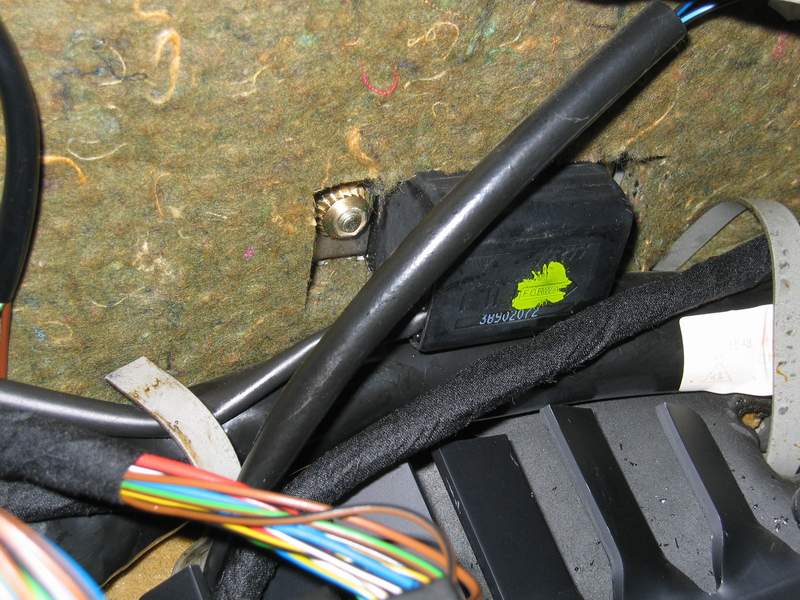


I can't say I enjoy working under the dash. Today, with my back/shoulders on the
driver's side footwell, legs placed on the floor outside the door, I hadn't
noticed that my left leg's blood supply had been cut. When I got out of the car,
I just about toppled over as my left leg gave out. Nasty. Probably a job that
should be done by smaller people.
Edit: here's a photo showing the passenger (right) side crash sensor and the
related connector.
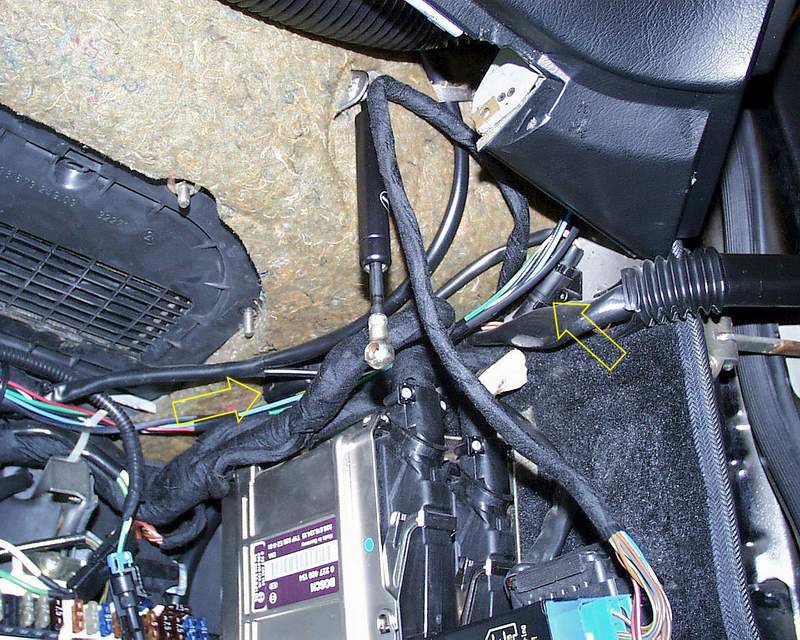
OK, I got the connector off. Turns out to be easy -- you just push both ends of
the wires/connectors away from the mounting bracket and it pops right off.
Apparently (based on what I can feel and the behavior), the connectors when
plugged together are held in place (on the back of the bracket shown in the
second photo in my original message) by a couple of clips, something like this:
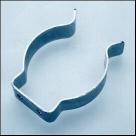
Anyway, once I got the sensor disconnected, I tested it as instructed in the FSM
and it checked out OK, i.e., 1..2 was about 10 k ohm and 2..3 was about 0.2 ohm.
Connector appeared to be in perfect shape, too, and the pins appeared to be gold
plated with no evidence of corrosion.
I guess I'll attack the air bag control unit next and see if there are any
connectors there with bad connections (or at least give me a point to test the
wiring between the sensor connector and the control unit).
I'd still be interested in anyone else's experiences troubleshooting this (or
similar) air bag system faults.
Ed Scherer
-----
I might ultimately wind up doing the swap, but it's a real PITA, because these
sensors are pretty hard to get to. The right side crash sensor is above the
LH/EZK units, which must be removed along with their mounting plate. Probably a
little easier to get to than the left side crash sensor.
The bigger issue, though, is that the sensors (and the air bag control unit) are
attached with "tear-off nuts" (yup, that's really what they're called, painful
as it might sound). The FSM calls for use of tool #9259 to remove them, and then
they need to be replaced (they're single-use by design). I have neither the tool
nor the replacement nuts. I could probably remove the tear-off nuts with a small
hole saw or something, but I really don't want to do a hack job on this stuff;
it's not a system that I want to screw up.
For now, I've put some DeoxIT on the sensor's connector and I'm going to button
it all up again for this evening. I'll cross my fingers and rerun the
diagnostics and see what happens.
If the problem remains, I'll make sure I get the right tools and perhaps a
replacement sensor so I can do this right.
Ed Scherer
-----
Okay, I 've been in both sides of this system, and you are on the right track. I
had the same fault codes indicating fault in crash sensor 1. Once I removed and
checked the resistance as you did, I put it back together and it worked fine. My
problem was high resistance in the connector to the sensor. Those tear of nuts
are a be-attach to get off with a vise grip.
Hopefully when you test again it'll be okay. The wiring from the sensors (4
diagram) to the controller go in on a large round connector on the back. The
connector can be accessed by taking off the pass side trim panel covered by
carpet and reach in with your right hand. It wouldn't be a bad idea to unhook
the connector and re-hook it just to move things around.
I don't know if it's time to mention this but always work with the battery
disconnected! The Spanner is a nice tool to use to diagnose these problems. I
think you'll find the fault was in one of the connectors you've moved around on
the left side.
Doc
------
Thanks, docmirror. Your comments are encouraging. Kind of hard to believe that
the connector would be a problem, as it looked like nice, clean, and
tight-fitting, but we'll see.
I'm just about done putting everything back together. Much easier to do when you
know how everything is fastened. I'll be up and testing within half an hour. I'm
on beer break.
Yeah, I was very careful do disconnect the battery ground strap and give it
awhile to discharge. I'm not taking any chances with the air bag system!
----
Well, air bag diagnostics passed, so we'll see how it goes over the next few
days.
Ed Scherer
----
For the record, it's been more than a week now, and the "air bag malfunction"
problem hasn't reappeared, so I'm considering this issue to have been resolved.
Cleaning/DeoxIT-ing the crash sensor connector seems to have done the trick.
__________________
Ed Scherer
'90 928S4 black/black
=====
In the Porsche
Manuals you can see that there is a device that is used in airbag test. Special
tool 9516 and 9516/1.
This is used to
simulate a good ignition circuit of the airbag. It was said (not verified) that
the resistance is 3 Ohm.
The test is simple:
9516 connects to the actual airbag connector and simulates the airbag ignition,
so the ecu says it is ok
Tool 9516/1 connects
to the wiring behind the contact ring that connects the ecu to the airbag while
the steering wheel can still turn.
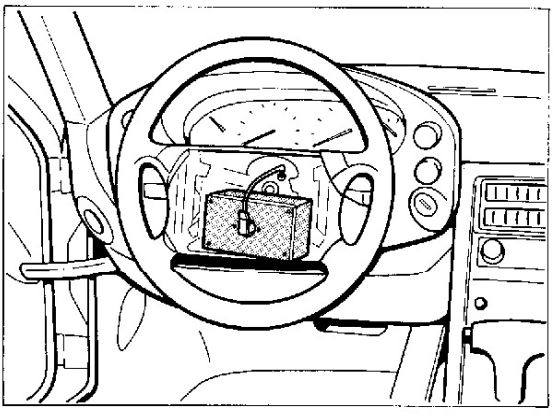
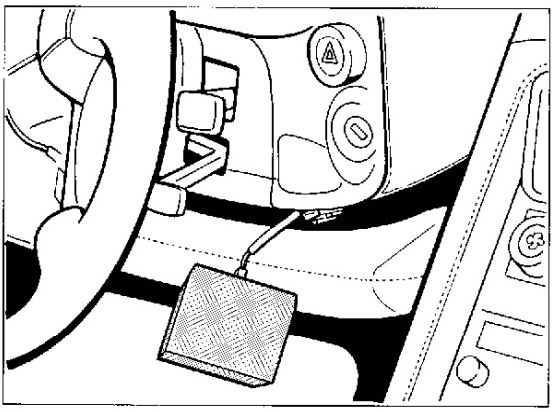
The bypass looks like this (again, not verified, I'm unsure if
this is the correct value - 3 Ohm 5 watt):
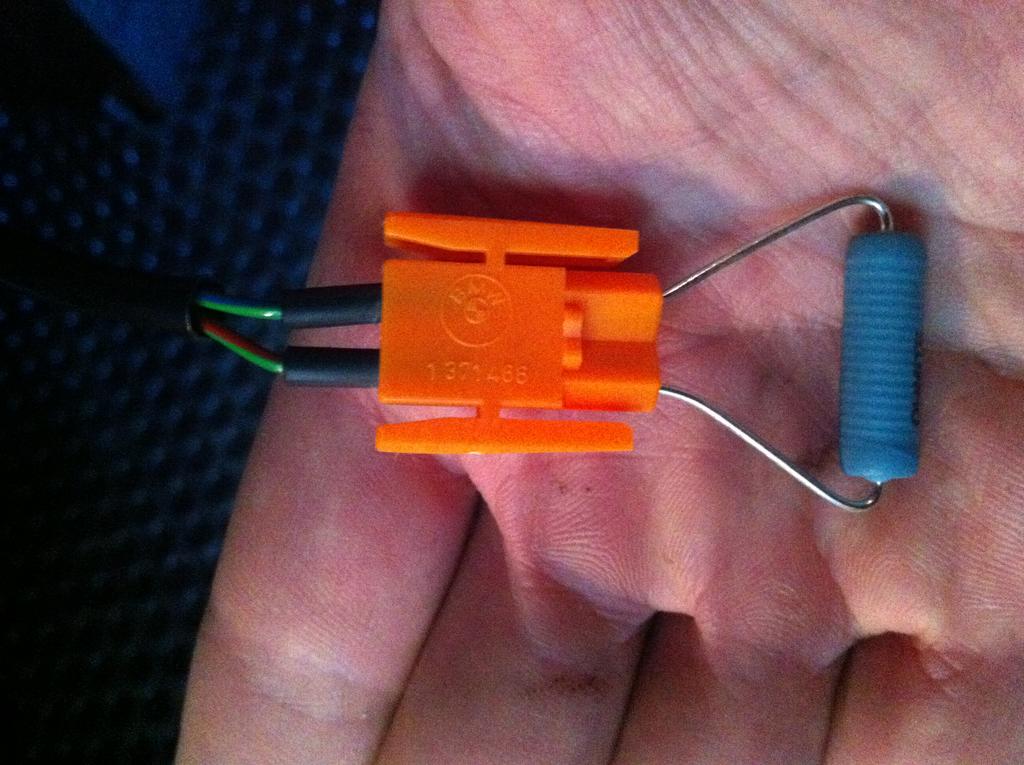
Theo Jenniskens
1992 Porsche 928 GTS Midnight Blue





